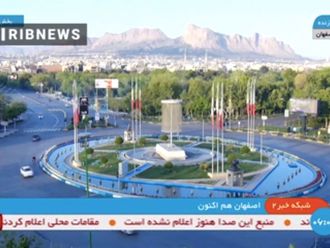
Two months after the lofty promises of the Singapore summit, the United States and North Korea are back to square one. Both sides are blaming each other for failing to implement the agreements.
The first signs of souring appeared less than a month after the Singapore meeting, when US Secretary of State Mike Pompeo travelled to Pyongyang to negotiate the denuclearisation process. Not only did the two sides make no headway, but also the North Koreans openly accused Pompeo of making “unilateral and gangster-like” demands.
Since then, North Korea’s foreign minister has complained that the US is “raising its voice louder for maintaining the sanctions”, while the foreign ministry has accused the Trump administration of clinging to an “outdated acting script” and manoeuvring to intensify “international sanctions and pressure”. Pompeo has indeed spoken of continuing the sanctions, while US National Security Adviser John Bolton has said that Pyongyang has failed to take the steps the White House feels are “necessary to denuclearise”.
What underlies this frustration is a fundamentally different understanding of what US President Donald Trump and North Korean leader Kim Jong-un had agreed upon in Singapore. Yes, both sides agreed that North Korea would “denuclearise”, but what does that mean exactly? The Trump administration interprets it as a simple two-step process: Complete and immediate denuclearisation, after which sanctions would be lifted and all benefits would flow. Kim, however, came away believing he had secured an agreement for a step-by-step process that would take place in tandem with a package of measures that would bring about normal diplomatic, political and economic relations with the US. That would include the lifting of economic sanctions, diplomatic recognition, security guarantees and a peace treaty that would replace the current ceasefire agreement that ended the Korean War in 1953.
Unfortunately, the Trump-Kim joint statement is so vague that it is of no help. It consists of just four items, in order of precedence: Establishing “new US-DPRK relations” (DPRK refers to North Korea’s official name); building a “lasting and stable peace regime on the Korean Peninsula”; working “toward complete denuclearisation of the Korean Peninsula”; and carrying out the immediate repatriation of American remains from the Korean War. Of these, there has been progress on only the final item, which Trump added as a last-minute request. Otherwise, the two countries are deadlocked, arguing over what should come first — a familiar problem diplomats call sequencing. Pressure will soon mount, threatening the hopes raised at the summit and leading to an all-too-familiar crisis cycle.
Strong signal
To avoid this outcome, the administration must broaden the diplomatic process. The most effective way to do this would be to establish reciprocal diplomatic liaison offices in Pyongyang and Washington. This would send a strong signal that the United States is prepared to meet the first commitment from the Singapore summit, while seriously testing North Korea’s insistence that it is looking for “new relations” with Washington.
Liaison offices have a strong track record of helping to normalise relations with other former adversaries in Asia. The US State Department’s liaison offices are stripped-down embassies, essential for regular diplomatic engagement, that have proved instrumental in establishing full diplomatic relations. Liaison offices in Beijing in the 1970s and Hanoi in the 1990s helped to resolve a number of thorny disputes, ranging from lifting sanctions to MIA/POW recovery to expanding economic, political and cultural relations. The continued presence and opportunity for dialogue provided by the liaison offices led in just a few years to the opening of full-fledged embassies in Beijing in 1979 and Hanoi in 1995.
There is a precedent for this step in North Korea’s case as well. Nearly a quarter-century ago, as part of the 1994 Agreed Framework, Pyongyang and Washington agreed to open liaison offices under the Vienna Convention on Diplomatic Relations. In fact, the US State Department made several site visits to Pyongyang and placed a number of people in full-time language training to open the US diplomatic facilities. Similarly, North Korean officials made visits to Washington to examine their own liaison office sites. Liaison offices never quite materialised under the paranoid and reclusive Kim Jong-il, but the outcome looks more likely under his worldlier son Kim.
It is now time for the Trump administration to revisit that agreement in order to broaden the diplomatic process with North Korea. Clinging to its own interpretation of the Trump-Kim agreement and its one-track denuclearisation demand clearly is not working. The strategy of “maximum pressure” has lost force after the Singapore summit. China, which accounts for 90 per cent of North Korean trade, has already normalised its relations with Pyongyang (which were broken after Xi Jinping became Chinese President) and will soon demand sanctions relief. Even South Korea is looking to find ways to open economic and humanitarian assistance to the North. Exchanging liaison offices is a key step in assuring that the US is not left out in the cold after the warmth generated in Singapore.
— Washington Post
Joseph Yun was the US special representative for North Korea policy from 2016 to 2018.










